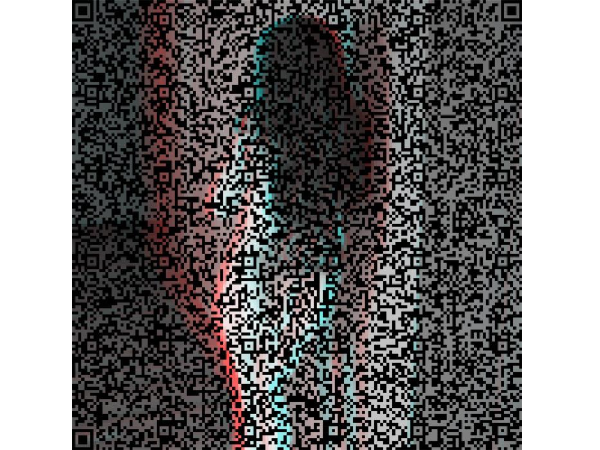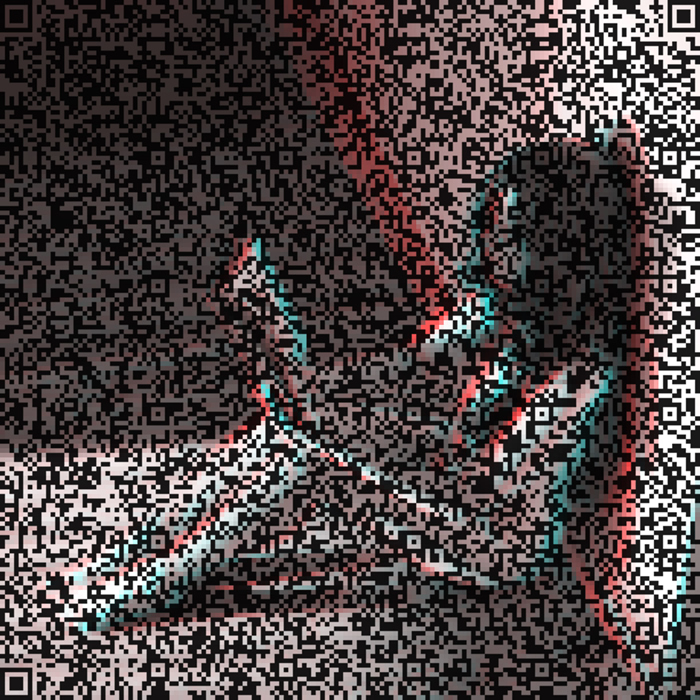'Per Speculum' Art Reveals Drawbacks of Encrypted Email
New York-based artist Maximus Clarke's piece 'Per Speculum' is about the difficulty of achieving truly private and anonymous communications.

The more you hide yourself, the more people will assume you have something to hide.
That's the paradox of present-day email encryption. Encrypting your email messages makes them virtually unreadable, but it also makes those messages stand out from the unencrypted traffic passing through the network. Put another way, email encryption may increase your privacy, but can decrease your anonymity.
It's this tension between privacy and anonymity that New York-based artist Maximus Clarke addresses in his art project "Per Speculum in Ænigmate." The photographs produced via "Per Speculum" are full of details both personal and cryptographic, but to the average viewer, the photos reveal nothing except that they have something to hide.
MORE: Can You Trust Apple with Your Data?
The photos in "Per Speculum" depict a naked female model next to a blank wall. They're also stereo anaglyphs — if viewed with 3D glasses, the model's body appears three-dimensional.
The images are slightly blurred, obscuring nearly all of the woman's features. A complex pattern of small black squares also overlays the photo, further masking the subject's identity.
Clarke gave the photos a three-dimensional appearance by photographing the model — who has remained entirely anonymous — with two cameras at once. He tinged one set of images red and the other cyan, and overlaid them to create single images.
Sign up to get the BEST of Tom's Guide direct to your inbox.
Get instant access to breaking news, the hottest reviews, great deals and helpful tips.
Naked but obscured, the woman is anonymous, but not private. The anaglyph imaging pronounces the woman's nakedness and through it her lack of privacy, but the blurring and the black squares mask her identity, emphasizing her anonymity.
These black squares are more than just obfuscation; they're QR codes, two-dimensional barcodes whose pattern corresponds to a text-based message. Smartphone apps called QR readers can convert the pattern back into readable text.
If you put one of the Per Speculum photos through a QR reader, however, the app might not recognize the QR code at all, or may output text that looks like a mere jumble of random letters, numbers and special characters.
That's because the messages encoded into the "Per Speculum" photos were encrypted using an open-source encryption program called GnuPG (or GPG). GPG is based on the groundbreaking encryption standard PGP, short for Pretty Good Privacy, which was created in 1991 and still holds up today.

Unlike the woman depicted in the photos, users of PGP encryption are private, but not anonymous. Their messages are as unreadable to humans as are the little black squares on the photographs, but anyone watching Internet traffic can tell which parts of the traffic are encrypted and which are not.
The name of the piece, "Per Speculum in Ænigmate," is Latin for "through a glass darkly." The line comes from the Latin version of the First Letter to the Corinthians in the New Testament, in which Saint Paul compares earthly life to looking at something via its reflection in a dim mirror, and heaven as looking at the thing directly.
In Corinthians, seeing something clearly is presented as far preferable to seeing a dim reflection of it. But Clarke's "Per Speculum" images turn that idea on its head, suggesting that it's better to be dim and obscured than to have all of your personal details — whether that be the contents of your messages or literal human nakedness — out in the open for anyone to see.
"Per Speculum" isn't just a series of photos; it was (and technically still is) also a functioning, if cumbersome, encrypted messaging method.
For one month, a group of participants conversed solely through Per Speculum, encrypting their messages with GPG, turning that encrypted text into a QR code, overlaying that code onto photographs of the model and emailing those completed photos to their intended recipients.
Does that sound like a real pain? It's supposed to be, because most available email-encryption services are notoriously difficult to use, particularly for security laypeople.
Nevertheless, Clarke says part of his intention with "Per Speculum" is to "evangelize" security and privacy technologies such as PGP.
The performative part of Per Speculum is over, but the images produced by the participants are still up on the exhibit's website. The site also includes a how-to for setting up GPG.
· 12 Computer-Security Mistakes You're Probably Making
· 'Don't Take Nude Selfies' Is Not Good Security Advice
· 7 Scariest Security Threats Headed Your Way
Jill Scharr is a staff writer for Tom's Guide, where she regularly covers security, 3D printing and video games. You can follow Jill on Twitter @JillScharr and on Google+. Follow us @tomsguide, on Facebook and on Google+.
Jill Scharr is a creative writer and narrative designer in the videogame industry. She's currently Project Lead Writer at the games studio Harebrained Schemes, and has also worked at Bungie. Prior to that she worked as a Staff Writer for Tom's Guide, covering video games, online security, 3D printing and tech innovation among many subjects.
-
pizzapeter It's interesting art, although I'm not sure I quite understand the point of the message. Encrypting your emails may make it stand out as being encrypted, but that doesn't mean it offers anyone a peak at your data providing the encryption is secure.Reply
